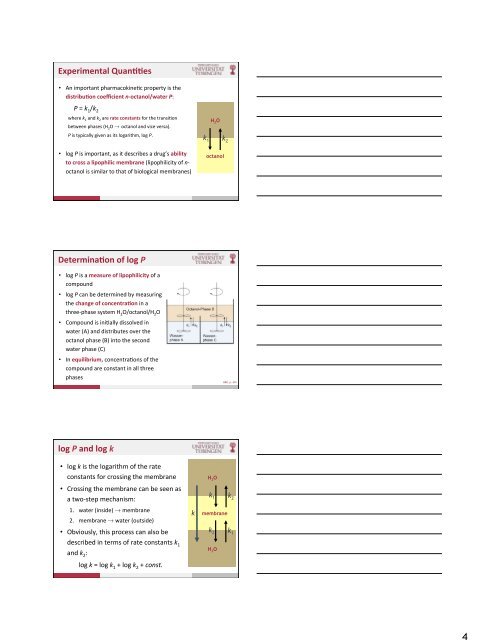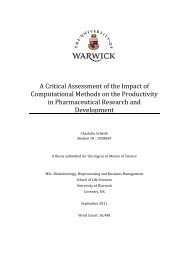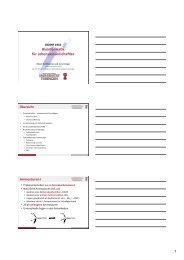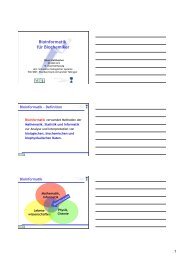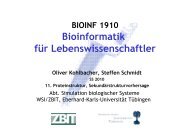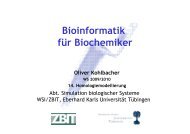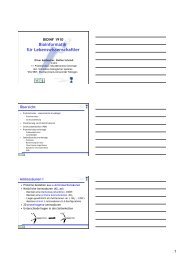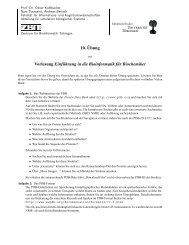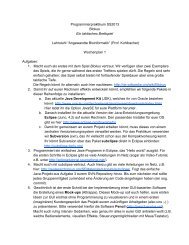Drug Design 2 - Applied Bioinformatics Group
Drug Design 2 - Applied Bioinformatics Group
Drug Design 2 - Applied Bioinformatics Group
Create successful ePaper yourself
Turn your PDF publications into a flip-book with our unique Google optimized e-Paper software.
Experimental QuanDDes<br />
• An important pharmacokine%c property is the<br />
distribuDon coefficient n-‐octanol/water P:<br />
P = k 1/k 2<br />
where k 1 and k 2 are rate constants for the transi%on<br />
between phases (H 2 O ! octanol and vice versa).<br />
P is typically given as its logarithm, log P.<br />
• log P is important, as it describes a drug’s ability<br />
to cross a lipophilic membrane (lipophilicity of n-‐<br />
octanol is similar to that of biological membranes)<br />
DeterminaDon of log P<br />
• log P is a measure of lipophilicity of a<br />
compound<br />
• log P can be determined by measuring<br />
the change of concentraDon in a<br />
three-‐phase system H 2 O/octanol/H 2 O<br />
• Compound is ini%ally dissolved in<br />
water (A) and distributes over the<br />
octanol phase (B) into the second<br />
water phase (C)<br />
• In equilibrium, concentra%ons of the<br />
compound are constant in all three<br />
phases<br />
log P and log k<br />
• log k is the logarithm of the rate<br />
constants for crossing the membrane<br />
• Crossing the membrane can be seen as<br />
a two-‐step mechanism:<br />
1. water (inside) ! membrane<br />
2. membrane ! water (outside)<br />
• Obviously, this process can also be<br />
described in terms of rate constants k 1<br />
and k 2 :<br />
log k = log k 1 + log k 2 + const.<br />
k<br />
k 1<br />
H 2 O<br />
octanol<br />
H 2O<br />
k 1<br />
k 2<br />
membrane<br />
k 2<br />
H 2O<br />
BKK, p. 401<br />
k 2<br />
k 1


